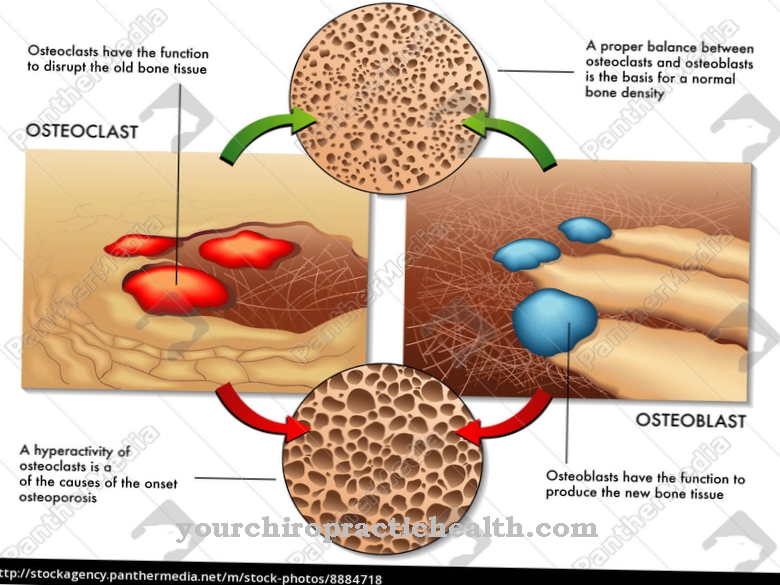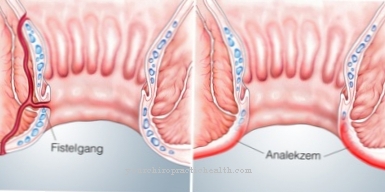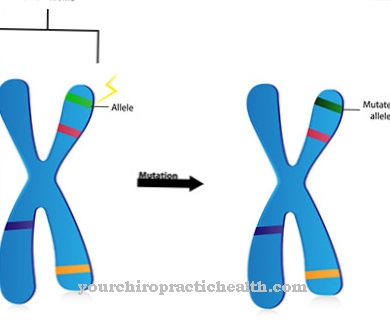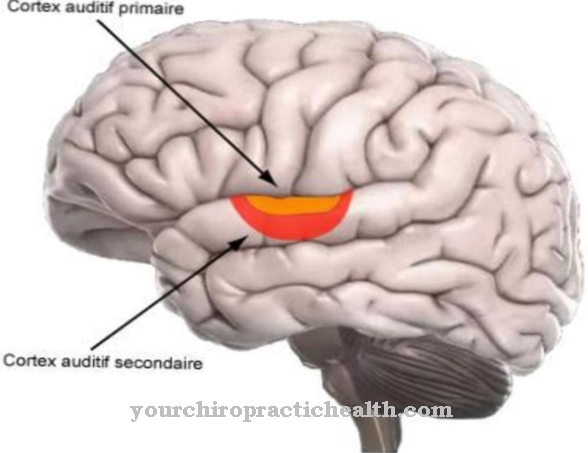The Tentorium cerebelli is a skin in the brain and delimits the posterior cranial fossa (fossa cranii posterior) from the middle cranial fossa (fossa cranii media). The brain stem protrudes through the tentorium slit (Incisura tentorii). Tears in the tissue can cause bleeding, which can eventually lead to midbrain syndrome.
What is the cerebellar tentorium?
The tentorium cerebelli represents an anatomical structure in the brain and is also called Cerebellar tent known. It is located in the gap between the cerebrum and the cerebellum (fissura transversa cerebralis).
The tentorium cerebelli forms a duplication of the hard meninges (dura mater), which medicine also calls duplication. The dura mater is one of three skins that surround the central nervous system. Accordingly, a distinction is made between the dura mater spinalis and the dura mater encephali. The former coats the spinal cord, while the latter coats the brain.
The cerebellar tentorium is not the only duplication of the dura mater. Further duplications of the hard meninges are the cerebral sickle (Falx cerebri) between the two halves of the telencephalon and its continuation, the cerebellar sickle (Falx cerebelli). The cerebellar sickle runs under the tentorium cerebelli, whereas the cerebral sickle connects to the tip of the tentorium and pulls it forward.
Anatomy & structure
The tentorium cerebelli is attached to the sulcus sinus transversi, which forms a pit in the occipital bone (os occipitale). A blood conductor, which anatomy calls the transverse sinus, runs through the depression.
In addition, the tentorium cerebelli is held by the upper edge of the temporal bone (pars petrosa ossis temporalis).This part of the bone has the shape of a pyramid and is located on the temporal bone (os temporale). As a duplicate of the dura mater, the tentorium cerebelli consists of the inner sheet (lamina interna) of the dura mater. The skin is made up of connective tissue.
In the tentorium cerebelli there is a slit, the incisura tentorii. Through this opening, part of the brain stem leaves the tent that forms the tentorium cerebelli. In addition, the third cranial nerve (oculomotor nerve) and the fourth cranial nerve (trochlear nerve) cross the tentoric notch. They accompany the posterior cerebral artery, which contributes significantly to the blood supply to the brain and is a branch of the basilar artery.
Function & tasks
The primary function of the tentorium is to separate the cerebellum and the cerebrum and prevent excessive stress from pressure. It holds part of the cerebrum and supports it so that the cerebrum does not lie directly on the cerebellum. Since the cerebrum is responsible for around 80% of the brain's mass, its weight would lead to considerable pressure between the two parts of the brain. The falx cerebri pulls the tentorium forward with the cerebrum and acts as a belt within the stabilization system. The support normally prevents the brain from flinging freely through the skull.
The cerebrum or telencephalon is the seat of thought in the real sense. Its tasks include higher cognitive processes as well as preconscious and conscious sensory perception, motor skills, emotions, learning, memory and numerous other processes. The cerebellum or cerebellum also participates in learning and motor skills, among other things. The tentorium cerebelli also protects blood vessels from high pressure. Otherwise, they could jam or tear.
Furthermore, the tentorium cerebelli separates the posterior cranial fossa (fossa cranii posterior) from the middle cranial fossa (fossa cranii media). Both belong to the base of the brain skull. The posterior cranial fossa contains the cerebellum and the brain stem. Parts of the brain stem also protrude through the tentorium slit and later establish a connection between the brain and the spinal cord. In contrast, the temporal lobe of the telencephalon lies in the middle cranial fossa. The temporal lobe includes, for example, structures that contribute to the limbic system. Its functions include emotional processes, memory, learning and vegetative control processes.
You can find your medication here
➔ Medicines against memory disorders and forgetfulnessDiseases
A tear in the cerebellar tentorium can lead to bleeding, which then puts pressure on the brain, thereby impairing its function. The tentorium tear is a possible complication during childbirth and represents a so-called birth trauma.
In this context, medicine differentiates between supratentorial and infratentorial bleeding. In supratentorial hemorrhage, the fluid accumulates above the tentorium, that is, towards the cerebrum. In contrast, the infratentorial cerebral hemorrhage takes place below the tentorium - in the direction of the cerebellum.
The escaping blood exerts pressure on the brain tissue and causes it to swell, so that it can become trapped in the tentorium slit. The temporal lobe and the uncus gyri parahippocampalis are particularly often affected. As a result, midbrain syndrome is also possible. Its symptoms include increased muscle tone, restlessness, weakened corneal reflex, deviations in the eyeballs and abnormalities in the pupil. In addition, the so-called doll's head phenomenon can often be observed: When the head is turned to the side, the eyes move with the head instead of keeping the gaze straight ahead by moving the eyeballs in the opposite direction. In the most severe stage, midbrain syndrome leads to coma.
The tentorial hemorrhage can be fatal. Above all, heavy bleeding that spreads widely is critical. Imaging procedures such as MRI and CT make the bleeding visible and allow doctors to precisely localize it and assess its extent. An operation may relieve the brain.
















.jpg)







.jpg)



